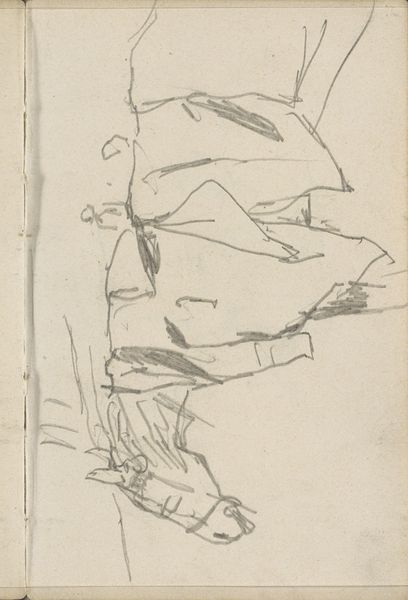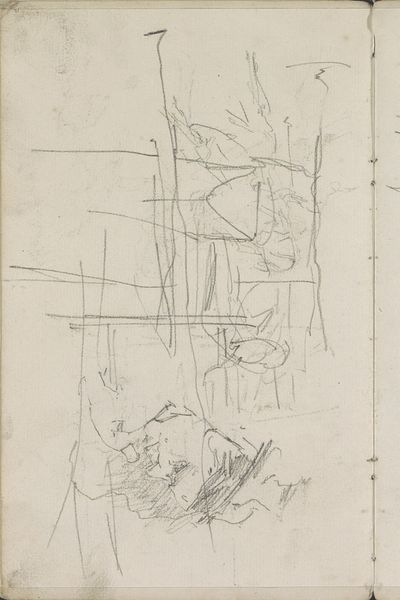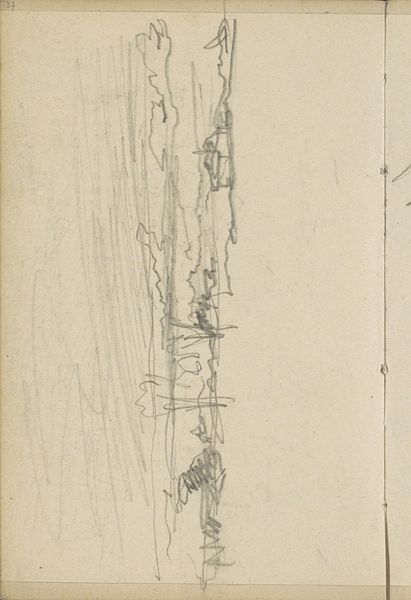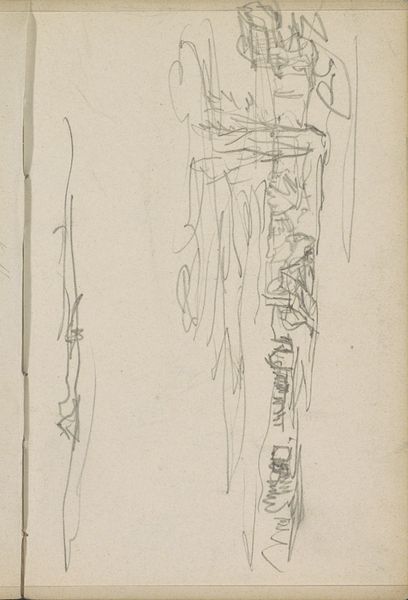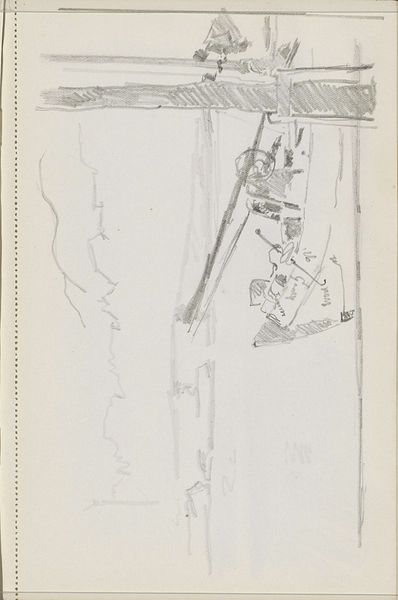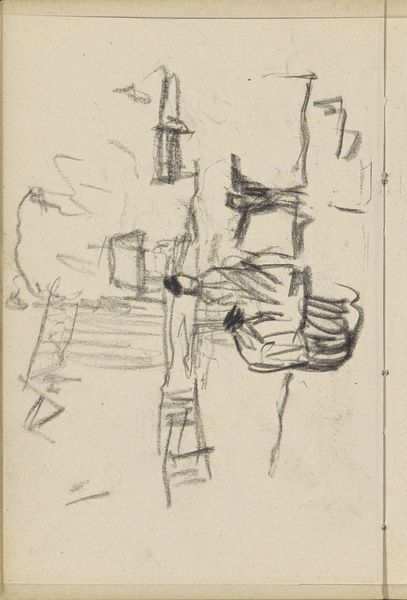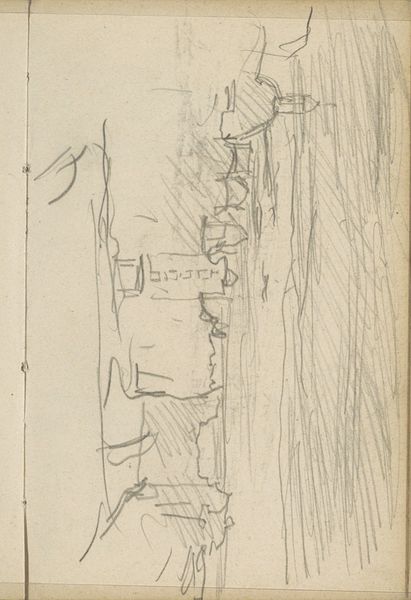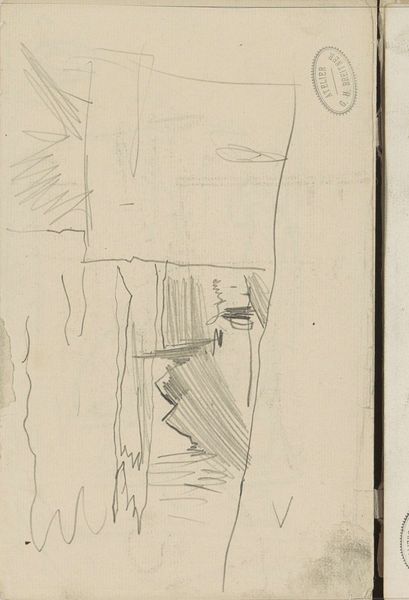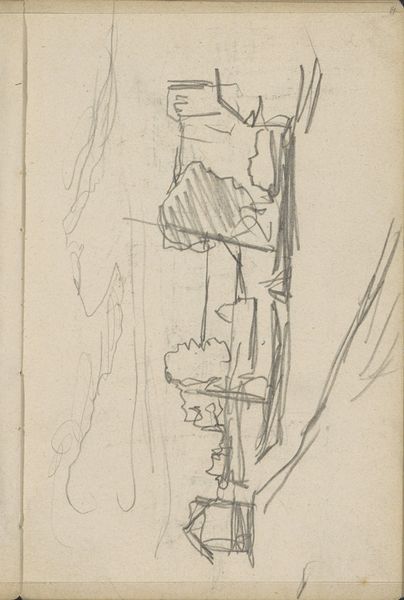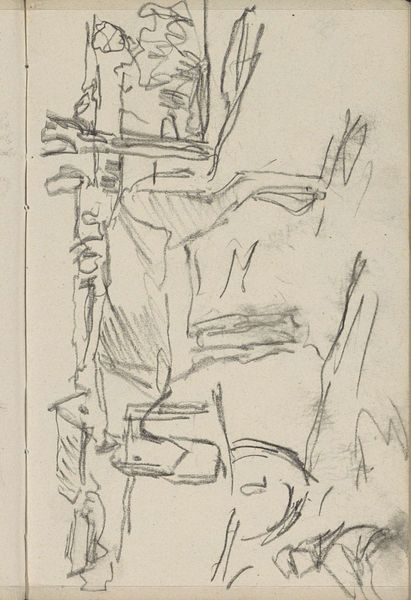
Figuren en paarden bij een overkapping of travalje c. 1902 - 1914
0:00
0:00
georgehendrikbreitner
Rijksmuseum
Copyright: Rijks Museum: Open Domain
Editor: This drawing, "Figuren en paarden bij een overkapping of travalje," by George Hendrik Breitner, dating from around 1902 to 1914, shows horses and figures underneath what appears to be a shelter, sketched in pencil. It's fascinating how much movement he conveys with just a few lines. What do you see in this piece? Curator: This seemingly simple sketch is brimming with information about cultural memory. Breitner, though associated with Impressionism, grapples with representing the rapidly changing urban landscape. Consider the horse – for centuries a symbol of power, labor, and rural life. Here, rendered with almost frantic lines, are they being sheltered, perhaps waiting for work? What does this fleeting glimpse of horses represent at the dawn of the automobile age? Editor: That’s interesting, I hadn't thought about the cultural weight of the horse in that context. It makes me wonder if the hurried lines also reflect that sense of a disappearing way of life? Curator: Precisely! Look at the “travalje”, the wooden frame. It’s not just a structure; it is itself a cultural artifact representing a now diminishing need. The sketch captures a moment of transition, preserving not just the image of horses but also the anxieties and uncertainties associated with progress. The line becomes a tool not of mere representation, but of cultural preservation and, maybe, even mourning. What does that recognition change for you? Editor: I guess I see it less as just a quick sketch and more as a poignant reflection on a changing society, captured in these dynamic lines and forms. Thank you. Curator: Indeed, and by understanding the layers of symbolism, we come closer to comprehending the human experience woven into even the most seemingly spontaneous creations.
Comments
No comments
Be the first to comment and join the conversation on the ultimate creative platform.
